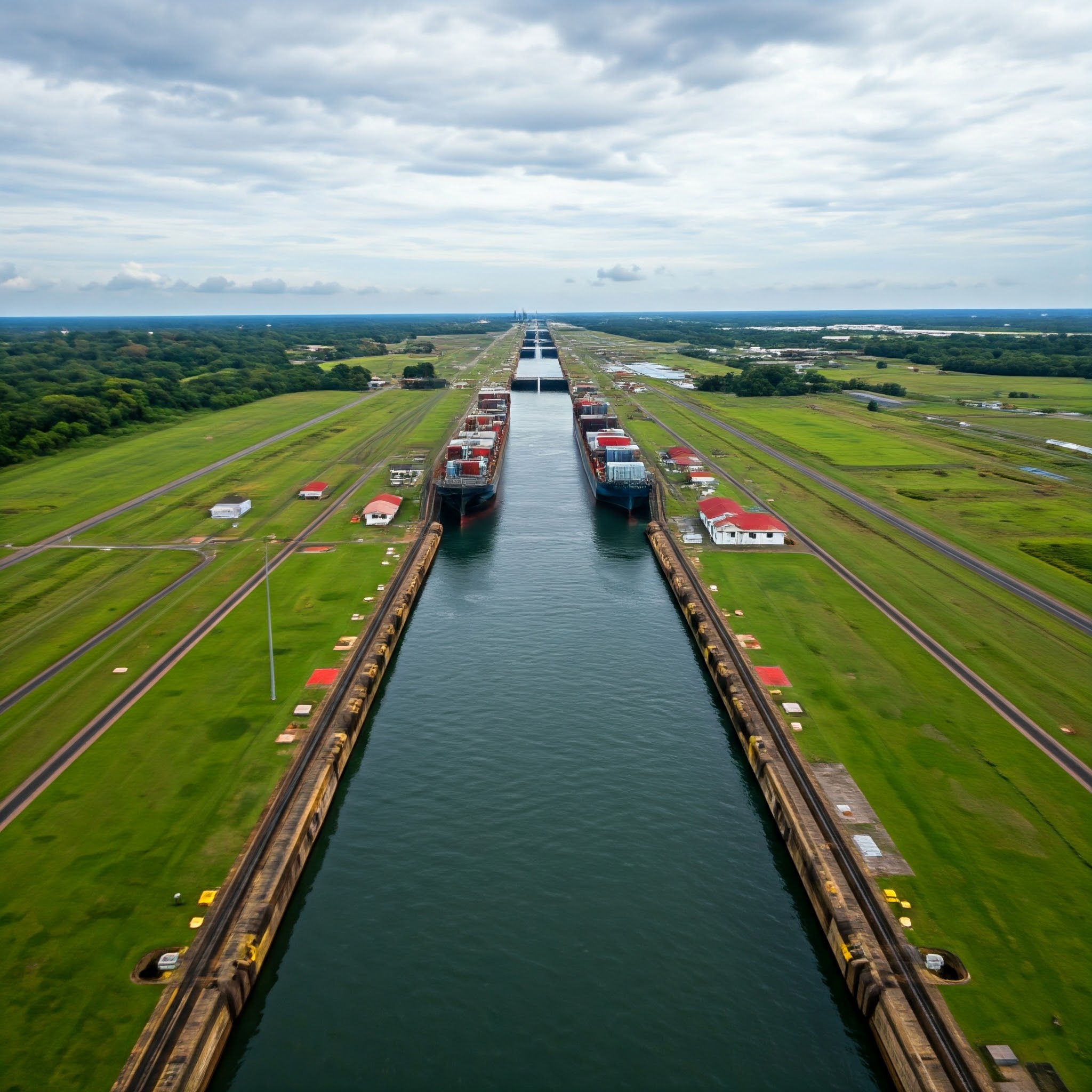Breaking News: The Panama Canal, a vital artery of global trade, continues to be a topic of discussion. Let’s dive intoThe Panama Canal has recently made headlines as former U.S. President Donald Trump expressed concerns over its control, hinting at reclaiming it amidst fears of rising Chinese influence. This move, however, has been met with strong opposition from Panama, reaffirming its sovereignty over this strategic waterway.
Why is the Panama Canal Important? 🚢
The Panama Canal is a critical engineering marvel that connects the Atlantic Ocean to the Pacific Ocean, revolutionizing global trade.
Key Facts About the Canal:
- Length: Approximately 80 kilometers.
- Trade Significance: Facilitates about 2.5% of global trade.
- Recognized as one of the Seven Wonders of the Modern World by the American Society of Civil Engineers.
Economic Impact 💰
The canal’s contribution to Panama’s economy and global trade cannot be overstated:
- Built for $375 million, it now handles 14,000+ vessels annually.
- Generated $3.4 billion in 2020, contributing 2.7% to Panama’s GDP.
From US Control to Panama Sovereignty 🇺🇸➡️🇵🇦
- Historic Transfer: The Torrijos-Carter Treaty (1977) set the stage for Panama to regain control of the canal.
- On December 31, 1999, the U.S. officially transferred ownership to Panama, ensuring its independence and neutral administration.
Challenges Ahead 🌦️
Despite its success, the canal faces significant challenges:
- Climate Change: In 2023, severe droughts led to reduced ship transits and increased tolls, disrupting global supply chains.
- Geopolitical Tensions: The canal remains a focal point for global powers like the U.S. and China, highlighting its strategic importance.
The Panama Canal is more than just a trade route; it’s a symbol of human ingenuity and a vital economic artery. As it navigates modern challenges, its role in shaping geopolitics and global commerce remains unparalleled.


Nice post. I learn something totally new and challenging on websites
Pretty! This has been a really wonderful post. Many thanks for providing these details.
Nice post. I learn something totally new and challenging on websites
Excellent breakdown of the topic.
Thanks for simplifying a difficult subject.
Freight delivery from China is dependable and fast.
Our company delivers flexible solutions for companies of any size.
We manage all shipping processes to make your supply chain seamless.
air express shipping from china
With scheduled shipments, we ensure timely arrival of your consignments.
Clients appreciate our skilled team and competitive rates.
Choosing us means assurance in every order.
В Telegram появилась функция звёзд.
Теперь участники могут выделять важные месседжи.
Это позволяет быстро возвращаться нужную информацию.
купить подарки в тг за звезды
Функция удобна для ежедневного общения.
Благодаря этому легко зафиксировать ключевые моменты.
Такой инструмент экономит время и делает общение проще.
Your point of view caught my eye and was very interesting. Thanks. I have a question for you.